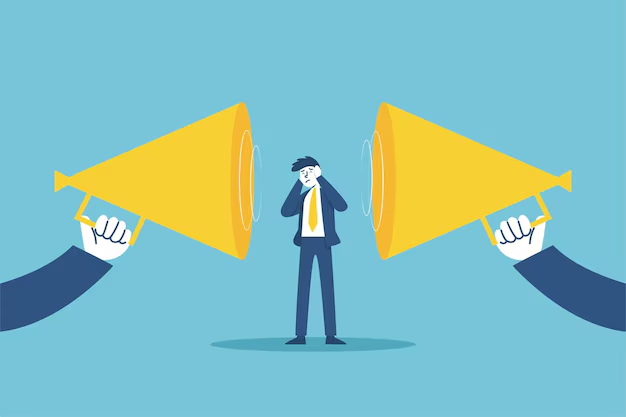




What are the Barriers to Communication?
Effective communication is crucial for personal and professional success, yet it often faces obstacles. Communication barriers refer to factors that hinder the flow of information between individuals or groups. These barriers can arise from physical, psychological, cultural, or language-related issues, leading to misunderstandings and inefficiencies. Recognising and addressing these barriers is essential to ensure clear, impactful communication. This page explores the different types of communication barriers, real-life examples, and practical strategies to overcome them. By understanding these challenges, you can enhance your communication skills and build stronger relationships in all aspects of life.

What are Barriers of Communication?
Barriers of communication are obstacles that hinder the exchange of ideas or information. These barriers can occur at any stage of the communication process—while sending, transmitting, or receiving the message. They can lead to misinterpretation, frustration, or even conflict, especially when left unaddressed.
Types of Barriers to Communication
1. Physical Barriers
Definition: External factors like distance, noise, or environmental conditions that disrupt communication.
Examples: Poor internet connection during online meetings, noisy workplaces, or geographically dispersed teams.
Solution: Ensure a quiet, distraction-free environment and invest in reliable communication tools.
2. Language Barriers
Definition: Differences in language, jargon, or technical terms that lead to miscommunication.
Examples: Use of industry-specific jargon that others may not understand, or communication between people who speak different languages.
Solution: Use simple and clear language, and avoid unnecessary jargon or technical terms.
3. Psychological Barriers
Definition: Emotional and mental states that affect communication, such as stress, fear, or preconceived notions.
Examples: Fear of judgment, anxiety during public speaking, or emotional bias.
Solution: Foster a supportive environment that encourages open and judgment-free communication.
4. Cultural Barriers
Definition: Misunderstandings caused by differences in cultural norms, values, or communication styles.
Examples: Differences in body language, greeting customs, or interpretations of politeness.
Solution: Promote cultural awareness and sensitivity among team members.
5. Semantic Barriers
Definition: Misinterpretation of words or symbols due to ambiguous language or differing interpretations.
Examples: Use of idiomatic expressions that may not translate well across cultures or technical terminology.
Solution: Be precise in language and clarify any ambiguous terms.
6. Technological Barriers
Definition: Challenges arising from the use of communication technologies.
Examples: Lack of familiarity with tools like video conferencing software, or technical glitches during presentations.
Solution: Provide training on technology and ensure systems are well-maintained.
7. Organisational Barriers
Definition: Structural issues within organizations that impede clear communication.
Examples: Poorly defined roles, hierarchical structures, or lack of feedback mechanisms.
Solution: Simplify organizational hierarchies and establish open communication channels.
How to Overcome Communication Barriers?
Clarity in Ideas: Organise your thoughts before communicating to ensure the message is clear and precise.
Know Your Audience: Tailor the message according to the receiver's knowledge, background, and environment.
Encourage Feedback: Seek feedback to ensure the message was understood as intended.
Use Simple Language: Avoid jargon, technical terms, or complex sentences that might confuse the audience.
Be Culturally Sensitive: Respect cultural differences and adapt your communication style accordingly.
Invest in Technology: Provide employees with proper training and tools to facilitate seamless communication.
Practice Active Listening: Focus on understanding the speaker's message without interrupting or making assumptions.
Maintain Consistency: Ensure your message aligns with organizational policies, goals, and previous communications.
Why is Overcoming Communication Barriers Important?
Breaking down communication barriers is essential for:
Enhancing teamwork and collaboration.
Reducing conflicts and misunderstandings.
Boosting productivity and efficiency in the workplace.
Strengthening relationships through clear and open dialogue.
Conclusion
Barriers of communication are inevitable but not insurmountable. By identifying these obstacles and adopting effective strategies, individuals and organisations can foster clearer, more impactful exchanges. Whether it’s bridging cultural gaps, addressing psychological concerns, or overcoming technological hurdles, proactive communication is key to building a harmonious and successful environment.
FAQs on Barriers of Communication: Understanding and Overcoming Challenges
1. What are the barriers of communication?
The barriers of communication refer to obstacles that hinder the exchange of ideas, such as language, physical, psychological, and cultural factors.
2. What are the barriers to effective communication?
The barriers to effective communication include physical barriers, language differences, psychological barriers, cultural misunderstandings, and organisational constraints.
3. List the barriers to effective communication.
The barriers to effective communication are physical, language, psychological, cultural, semantic, organizational, and technological barriers.
4. What are the types of barriers of communication?
The types of barriers of communication are physical, psychological, cultural, semantic, technological, and organizational barriers.
5. What are the physical barriers of communication?
Physical barriers of communication include distance, poor infrastructure, noisy environments, and inadequate technology that obstruct the communication process.
6. What are the semantic barriers of communication?
Semantic barriers of communication arise when words, symbols, or phrases are interpreted differently due to ambiguous or complex language.
7. How to overcome barriers of communication?
To overcome barriers of communication, use clear language, actively listen, provide feedback, be culturally sensitive, and ensure proper communication tools are in place.
8. What are the cultural barriers of communication?
Cultural barriers of communication occur when differences in cultural norms, values, or communication styles lead to misunderstandings.
9. What are the types of communication barriers?
The types of communication barriers include physical, psychological, semantic, cultural, technological, and organizational barriers.
10. What are the personal barriers of communication?
Personal barriers of communication include emotional states, low confidence, preconceived notions, and fear of judgment that affect one’s ability to communicate effectively.
11. Why do barriers of communication occur?
Barriers of communication occur due to factors like unclear messages, environmental distractions, emotional stress, and cultural differences.
12. What is the importance of overcoming barriers to effective communication?
Overcoming barriers to effective communication ensures better collaboration, reduces misunderstandings, and enhances productivity and relationships.




































